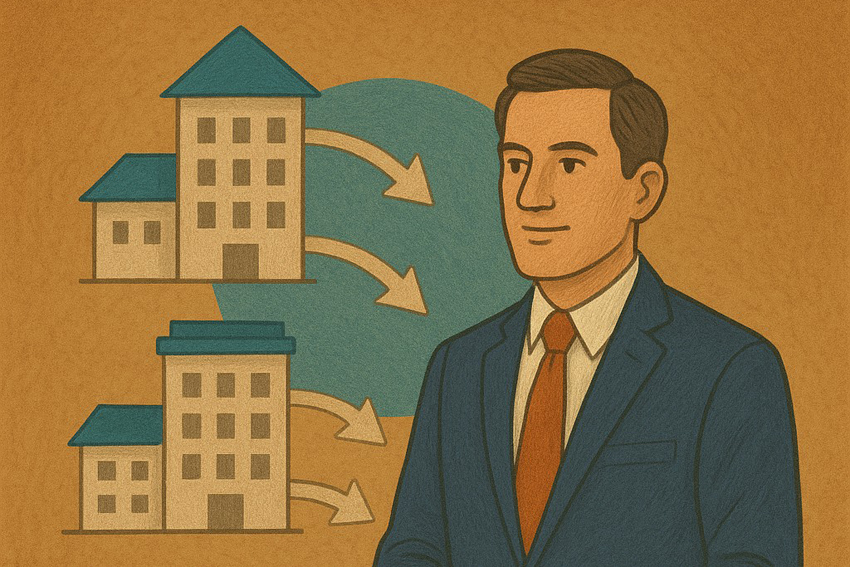Complete Communicator: The art of the client-focused conversation
Complete Communicator: The art of the client-focused conversation
By Jay Sullivan
When communicating in a professional setting, a person can only talk about one of three things. They can talk about themselves, about their content, or about their audience. Those are the only options.
Most audiences don’t care about the speaker; they didn’t come to the conversation for the benefit of the speaker. Audiences also rarely care about the subject matter of the conversation. They aren’t interested in an academic lecture about how an obscure provision in a statute works. Instead, they care about how the subject matter impacts them, which is different from the subject matter itself. Therefore, the goal is always to talk to the audience about the audience. Easy to say, but what does it mean in execution?
Here are two very specific ways to make sure the conversation is always focused on the needs of the audience.
Sharing the initial thought
Most people start a meeting by saying, “What I want to talk about today is…” or “What I want to share with you is….” They start with the words, “What I want,” as if anyone cares what they want. No one cares what the speaker wants. Instead, we should adopt the language, “What I thought would be helpful to you today is….”
When speakers open with that language, they convey two things. First, they convey that they are focused on the needs of the audience. Second, and more importantly, if they have the thought, “Helpful to them,” running through their minds, they become more judicious about what they are sharing and how they are sharing it based on their only reason for being in the room, to be helpful to someone else.
Switching from “What I want,” to “What I thought would be helpful to you,” is not just a semantic difference; it’s substantive. If the speaker has truly considered why certain information might be helpful to their listeners, they’re thoughtful about what they share, when they share it, and how they share it.
The word choice allows the speaker to appear as a more strategic partner to the listener. The shift in language prompts a change on a deeper level. A lawyer’s development as a client service professional doesn’t begin with a change in values or attitude that then translates to a change in behavior. Instead, a person’s change in behavior leads to a change in their underlying ethos regarding how they serve their clients. In other words, positioning your information differently alters how you think about your relationships.
Focus on the purpose of the meeting
Because lawyers spend so much time focused on their content, many think the purpose of their client meeting is to deliver their content. It’s not. The purpose of a client meeting is to build a relationship.
If someone sits down with a client and says, “Thanks for meeting with me to talk about X,” then dives into their document and talks about X, what they are conveying is that they are small, and narrow, and limited to talking about only X. Instead, after acknowledging the purpose of the meeting, the first word the speaker should say is, “Before.”
Before we get into that….
Before I share our analysis regarding….
Before we review the contract….
Then, the speaker should ask an open-ended question that, in essence, turns the agenda of the meeting over to the client.
“Before we get into that, what else is on your agenda today?”
“Before we get started, what else is pressing for you?”
“Before I launch into that topic, how are things going here since the news appeared in the Journal yesterday?”
The speaker can ask a broad question or something more targeted. But they should ask something. By doing so, the speaker communicates, “I’m glad to be a broad resource for you. You’ve got a smart person sitting across from you. How can I be helpful?”
It takes a brave professional to be willing to sabotage their own agenda for the sake of the client. But when meeting with a client, a lawyer’s only objective should be to meet the client’s objective. The worst meeting scenario is to start the meeting by stating the agenda, diving into the agenda, and at the end asking the client, “Is there anything else you wanted to talk about?” That conveys that the lawyer’s only agenda was to get through their material instead of meeting the client’s needs. We live in a fluid work world where people’s needs and objectives change rapidly. To remain nimble and responsive in that environment, we need to ask more questions, and think about how our information is helpful to our listeners.
Most of the time, when lawyers ask their clients if there are other agenda items they want to cover, the client will be more than happy to stick to the stated agenda. But in the instances where the client wants to address other topics, chances are the lawyer has just secured more business, both in the short term regarding whatever issue the client has raised, and in the long term by building a tighter relationship.
![]() Jay Sullivan is a former practicing attorney and a partner at Exec/Comm, LLC, a communications consulting firm. He can be reached at [email protected]. He is the author of ‘Simply Said: Communicating Better at Work & Beyond, and The New Nimble: Leading in the Age of Change (Wiley), due out in October 2023.
Jay Sullivan is a former practicing attorney and a partner at Exec/Comm, LLC, a communications consulting firm. He can be reached at [email protected]. He is the author of ‘Simply Said: Communicating Better at Work & Beyond, and The New Nimble: Leading in the Age of Change (Wiley), due out in October 2023.
Share this story, choose a platform
Brought to you by BridgeTower Media
Free Weekly Newsletter
Recommended content
Legal Ethics: MSOs: Good for Big Law, good for all?
Legal Ethics: MSOs: Good for Big Law, good for all? By Jim Doppke As we head into 2026, we should [...]
The office holiday party preparedness guide
Fellowship and good cheer may be the aim, but the holiday party is fraught with pitfalls for the unwary. Read [...]
How lawyers really grow business: Lessons from leading rainmakers
Successful lawyers say business development grows out of actions practiced over time that build trust, demonstrate value, and create visibility. [...]
Stop forcing functional experts into people management jobs
Being proficient technically in the law does not necessarily mean a lawyer should be entrusted with managing others in the [...]






